Spring through winter; a wreath is always a welcome sight on your front door or garden gate. Wreaths add charm to your home and can even boost your curb appeal, but there’s no reason to go out and buy a premade one or craft a wreath out of artificial flowers.

From wreath frames and bases to accent flowers, you can actually grow almost everything you need for crafting your own homemade wreaths right in your own backyard. Not only will growing your own wreath making supplies save you money, but it can give you a sense of accomplishment and encourage your creativity too.
In this guide, we’ll cover some of the best plants to grow for creating your own decorative wreaths. We hope that it inspires you to get crafting!
Jump to:
- Best plants to grow for homemade wreath making year-round
- Plants to grow for wreath frames
- Vines
- Cereal grains and grasses
- Plants to grow for wreath bases
- Plants to grow for wreath accents
- Herbs
- Berries
- Dried flowers
- Other plants for added color
- Other plants for tons of texture
- Frequently asked questions
- Summary
Best plants to grow for homemade wreath making year-round
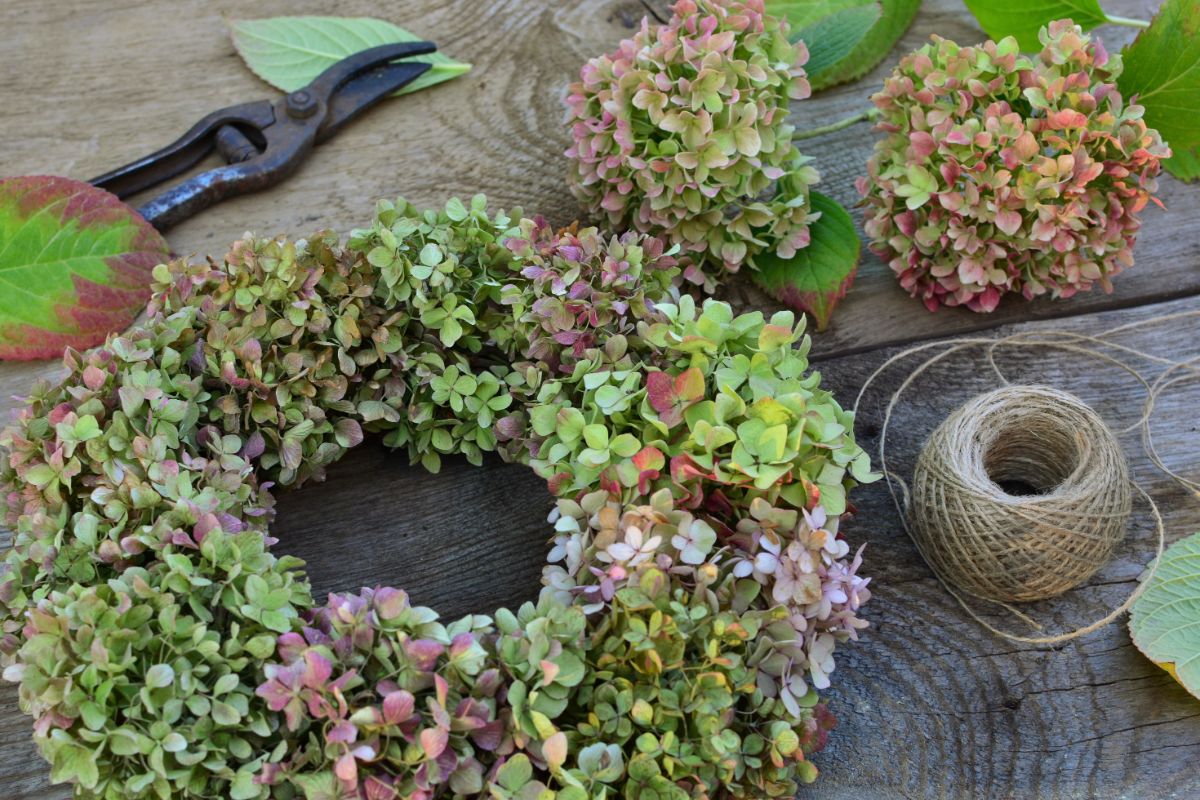
While most people think about wreaths around the holidays, you can make beautiful DIY wreaths to suit your home and garden in any season. Just vary the accents plants, add a few flowers or berries, and you can reuse your wreath frame season after season.
Plants to grow for wreath frames
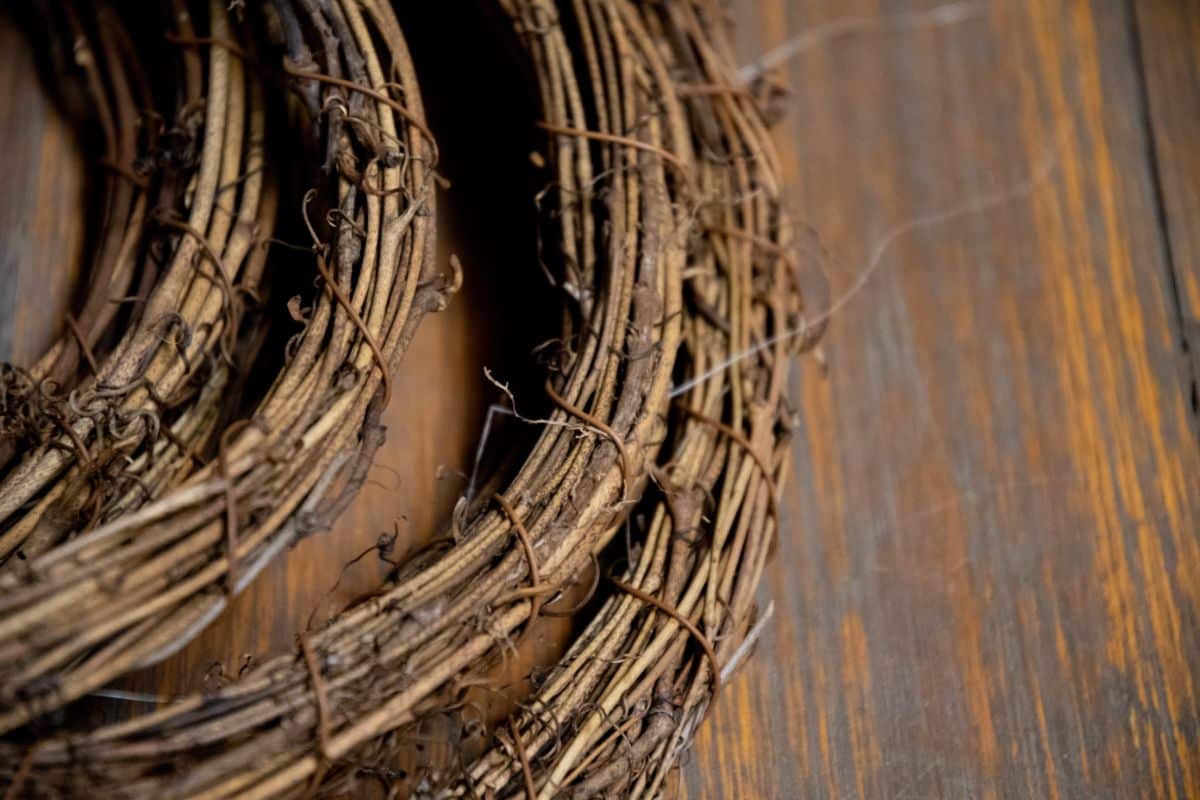
Wreath frames are often made of woody vines, straw, or metal, but the good news is that you don’t have to go out and buy one. There are actually a number of plants that you can grow in your backyard space that are just perfect for creating your own DIY wreath frame.
Vines

Wreath frames made of woody vines are sturdy and have a classic look to them. These elegant frames can be dressed up with evergreens in winter or embellished in spring with ephemeral blooms. Either way, they will form the perfect foundation for your DIY wreath.
There are a wide variety of woody vines that you can grow in your backyard that will make fine homemade wreath forms. Grapevine is one of the top vining plants to try, as it is sturdy, fast-growing, and easy to keep.
Other common vining plants grown for wreath making include:
- Honeysuckle
- Wisteria
- Trumpet vines
- Virginia creeper
- Climbing hydrangea
Keep in mind that some vining plants, like honeysuckle, can grow quite aggressively and may become invasive in some areas. For this reason, be sure to do your research before planting any vining plants and be prepared to do some pruning no matter what vine type you choose to grow.
Additionally, since vines will need some support, you may need to install some trellising to support your plants.
Cereal grains and grasses
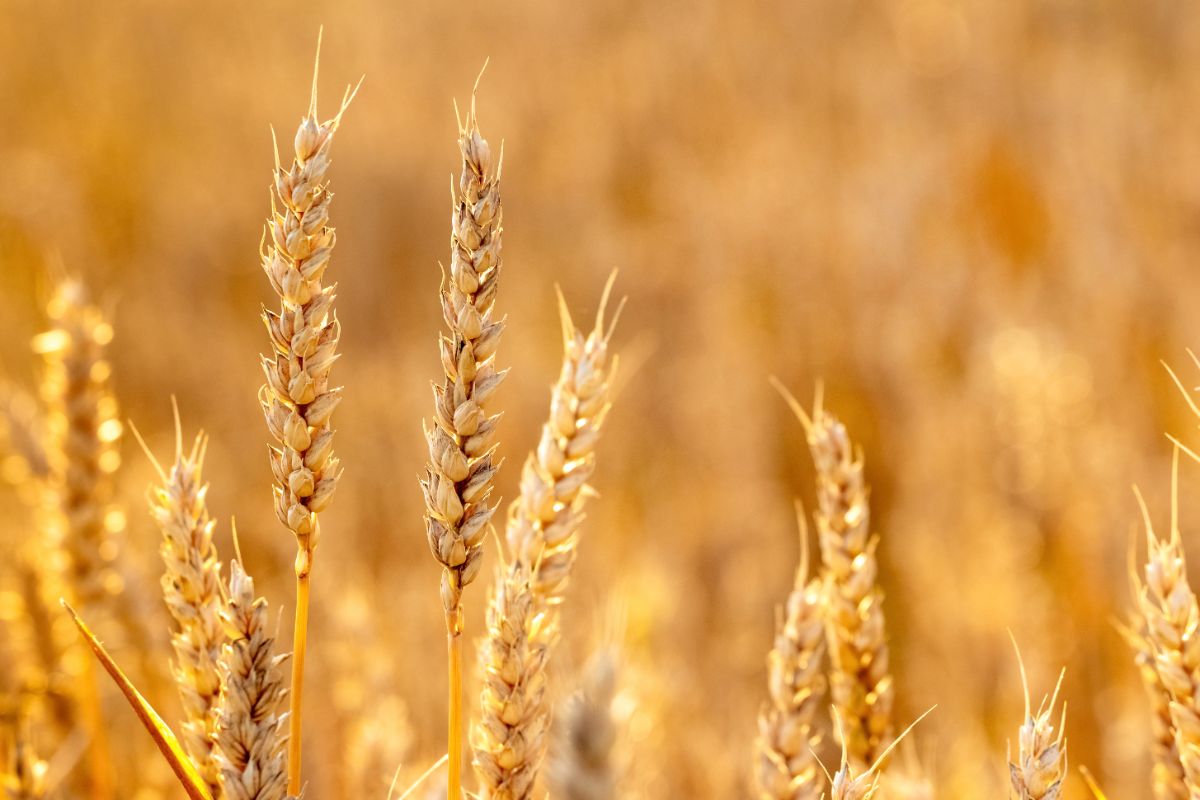
If you prefer working with wreath bases made of straw, you can also grow plants of this sort in your backyard. The benefit of working with these plants is that they are fast-growing and can generally be harvested much sooner than woody vines.
Depending on the size of your garden, you may not have the space to grow cereal grains for wreath making, but if you have a larger plot of land, this can be a great idea. Plants like wheat, sorghum, rye, barley, oats, and millet can make very sturdy wreath frames. An added perk is that these plants also can be very ornamental, and seed heads can be used as decorative accents in homemade wreaths too.
If you don’t have the space for crops like wheat, you may choose to grow ornamental grasses instead for creating your wreath frame. Miscanthus, also known as silver grass, is one type of ornamental grass often used for wreath making. This plant is prized for its durability and can be used to make a sturdy frame, but its wispy, silver-toned seed heads are also very pretty to look at.
Plants to grow for wreath bases

Once you have your wreath frame made, you’ll probably want to decorate it with some colorful greenery. And the most obvious option for that is, of course, evergreen trees and shrubs.
While evergreen branches are perfect for holiday wreaths, you can adapt evergreens to many different wreath designs appropriate for different seasons, too, depending upon the species you decide to work with.
When looking for evergreen branches for wreath making, the best greenery to use has stems that are somewhat flexible and are no larger in diameter than a pencil. Needles should also be long-lasting after being cut so that your wreaths stay fresh for as long as possible.
As far as plant varieties go, fir is the top evergreen plant to work with for holiday wreath designs; however, white pine, arborvitae, yew, and juniper are all fine picks too. Cedar is particularly desirable as well and is especially favored for its strong scent.
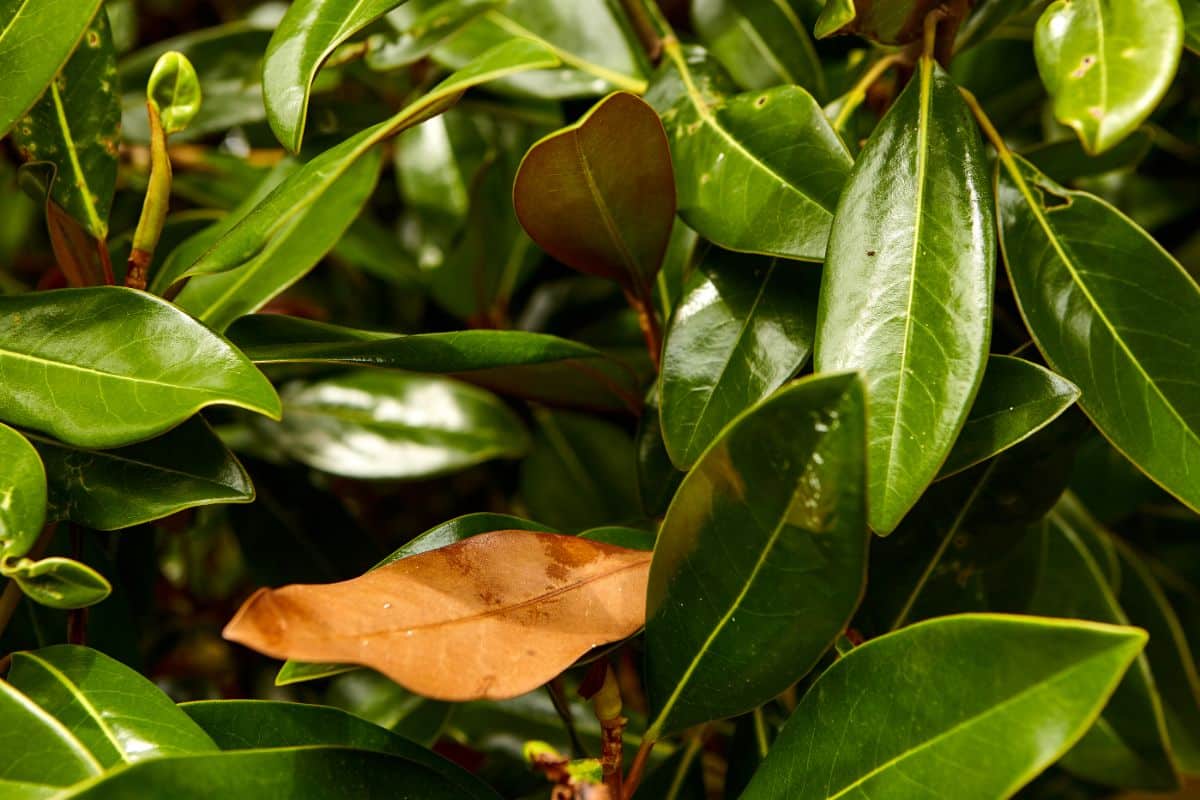
Because they grow so large, growing full-grown evergreens may not be appropriate for all garden spaces. Instead, if you have a smaller property, you may want to look for dwarf evergreen varieties, which grow much more compactly. You won’t be able to harvest as much greenery at one time, but you still should be able to gather enough to make a dazzling holiday wreath or two!
If you’re looking for more inspiration for evergreen plants to grow for wreath making, some other choices include:
- Boxwood
- Magnolia
- Hemlock
- Spruce
Plants to grow for wreath accents
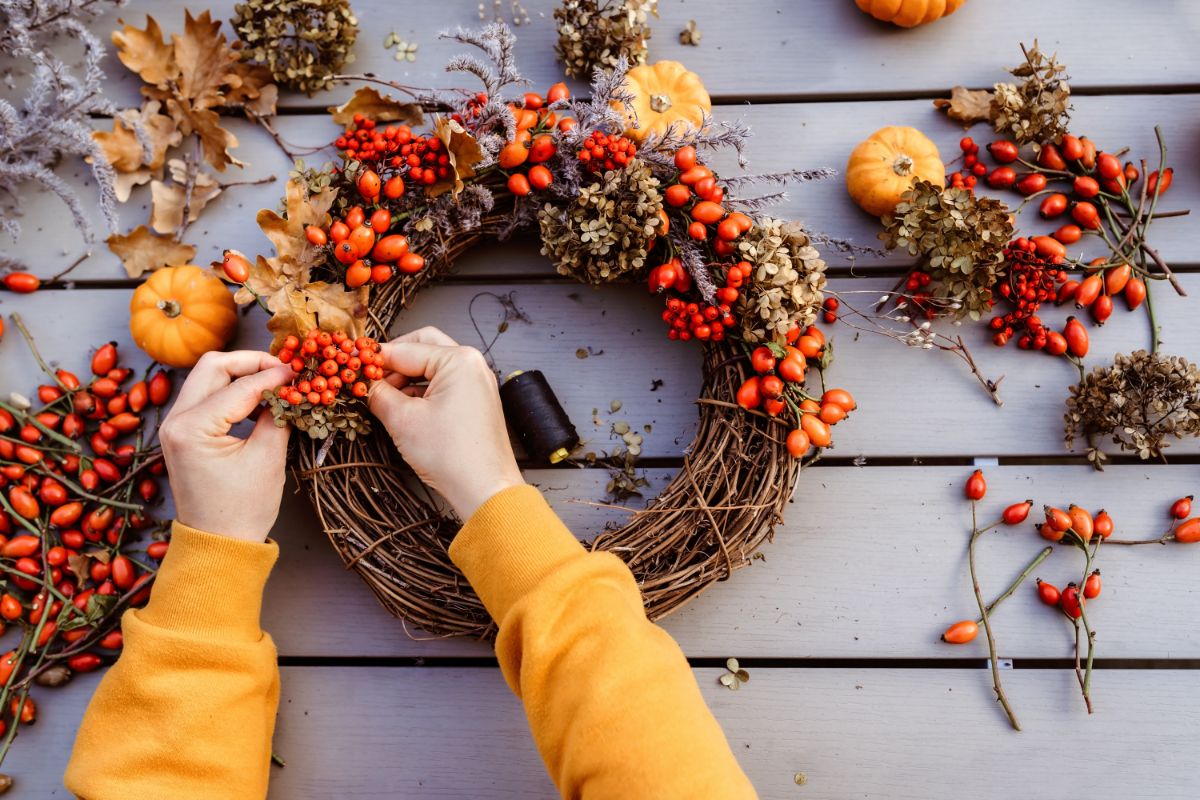
After building the base of your wreath, it's time to embellish your creation with added accents. What types of plants you want to use for this can vary greatly based on your taste and aesthetic, growing climate, and season, but that variety makes wreath designing that much more fun!
Ideal wreath accent plants are plants that will provide your wreath with intriguing textures, alluring scents, and a pop of color. You’ll also want to look for plants that will preserve their look well, even after being cut. So, any plant that works for dried floral bouquets would, of course, work perfectly for wreath making.
Herbs
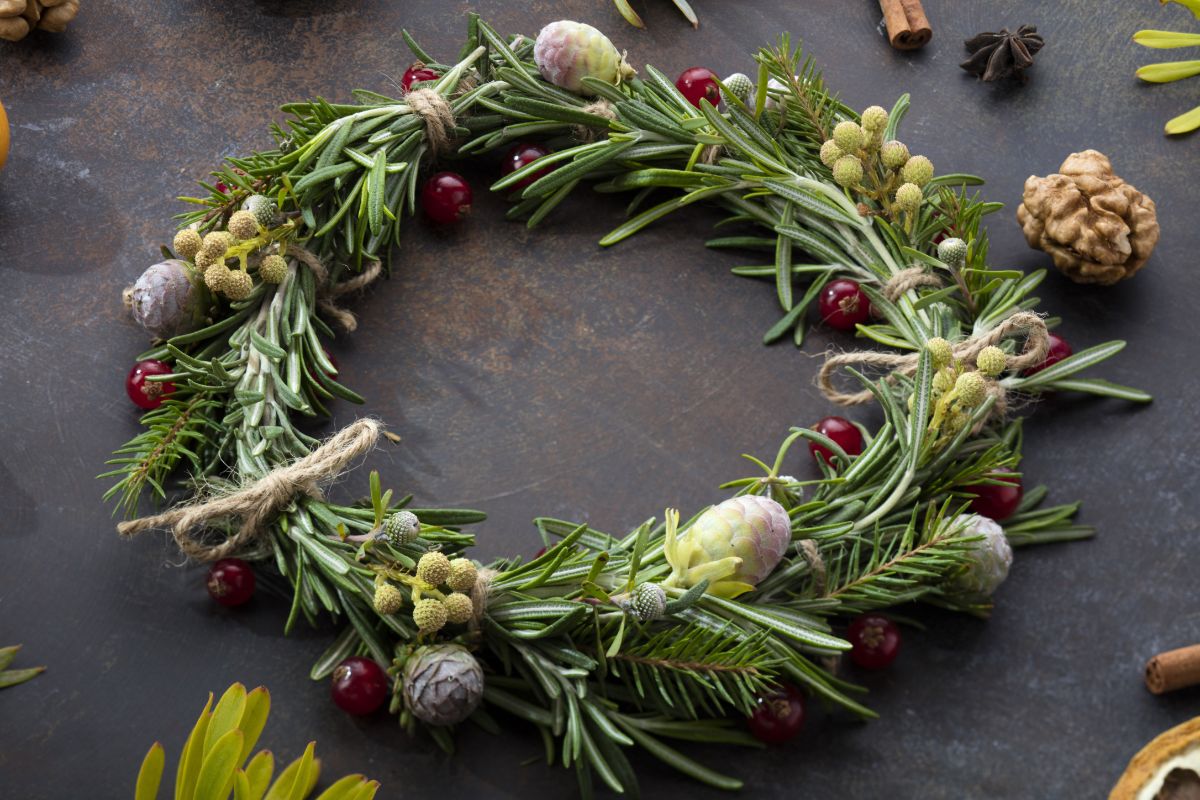
Herbs aren’t just for eating. Many culinary and medicinal herbs make wonderful additions to wreaths too!
Thanks to their texture, ease of drying, and unforgettable fragrances, some of the best herbs for wreath embellishment include:
- Rosemary
- Lavender
- Silver dollar eucalyptus
- Oregano
- Sage
- Thyme
- Bay laurel
The delight of using these plants in your wreath is that every time you open your door, you’ll be greeted with a rush of fine-smelling herbs!
Berries
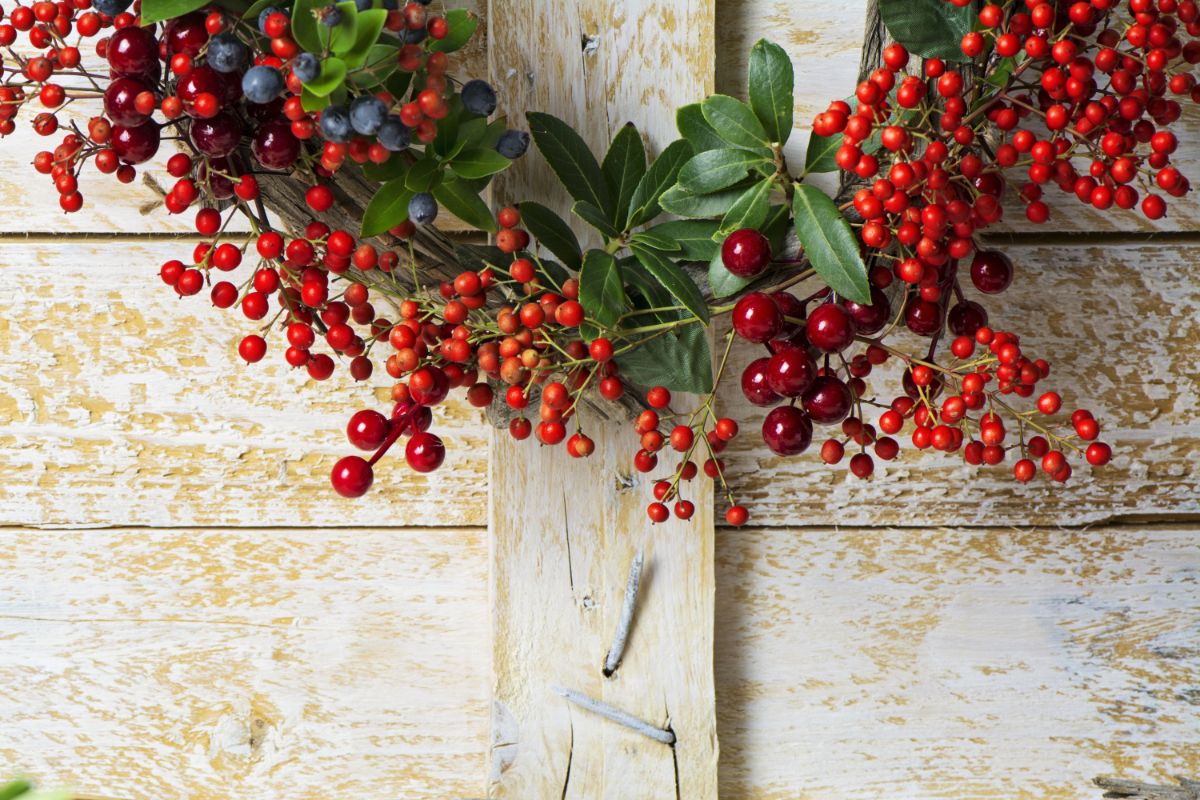
Berries are one of the best plants to add to wreaths for a pop of color, and many vibrant berries are easy to grow in your backyard. Even better, many of these berries mature during the fall and winter, ensuring that they’ll be ready to ornament your holiday wreaths!
Berry varieties that work particularly well in wreath design include:
- Holly
- Winterberry
- Hawthorne
- Hypericum
- Blueberries
- Rosehips
- Beautyberry
- Dogwood
- Firethorn
- Juniper
Dried flowers
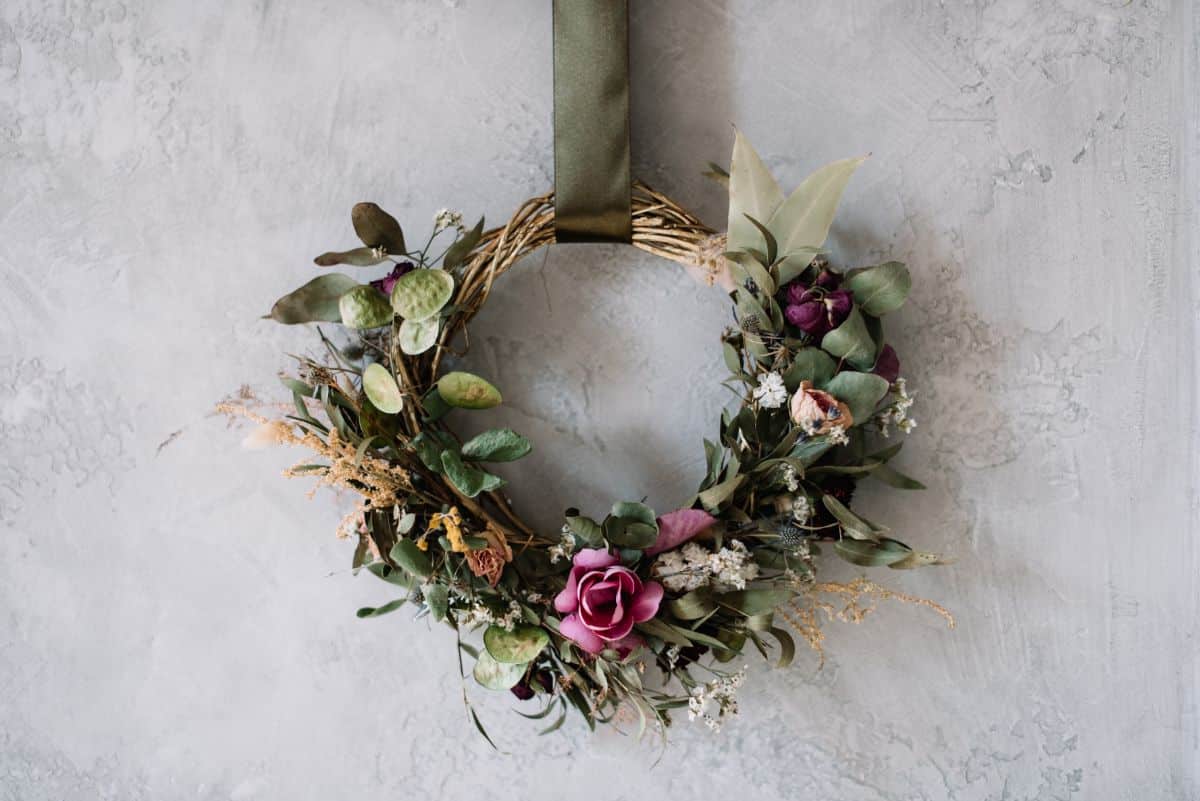
Any flower that can dry beautifully for floral bouquets can definitely work in a homemade wreath, and using dried flowers is a perfect way to liven up your wreath with more color and texture too. Just make sure you pick flowers that hold their shape once dried and retain their color. If you plan on making a holiday wreath using dried flowers, you can cut your flowers during the growing season and then dry them for later use by hanging them up indoors or using silica gel.
For a special treat, you can even design a wreath to convey a specific message using floriography or the Victorian language of flowers. This a perfect gift idea for family or friends to be treasured for years to come!
While you can certainly use other flowers in your homemade wreath design, some popular choices include:
- Roses
- Hydrangea
- Strawflowers
- Statice
- Yarrow
- Tansy
- Celosia
- Baby’s breath
- Amaranth
- Lunaria
- Larkspur
- Drumstick allium
- Bachelor buttons
- Hops
- Poppies
- Cardoon
- Milkweed
- Craspedia
- Safflower
Other plants for added color
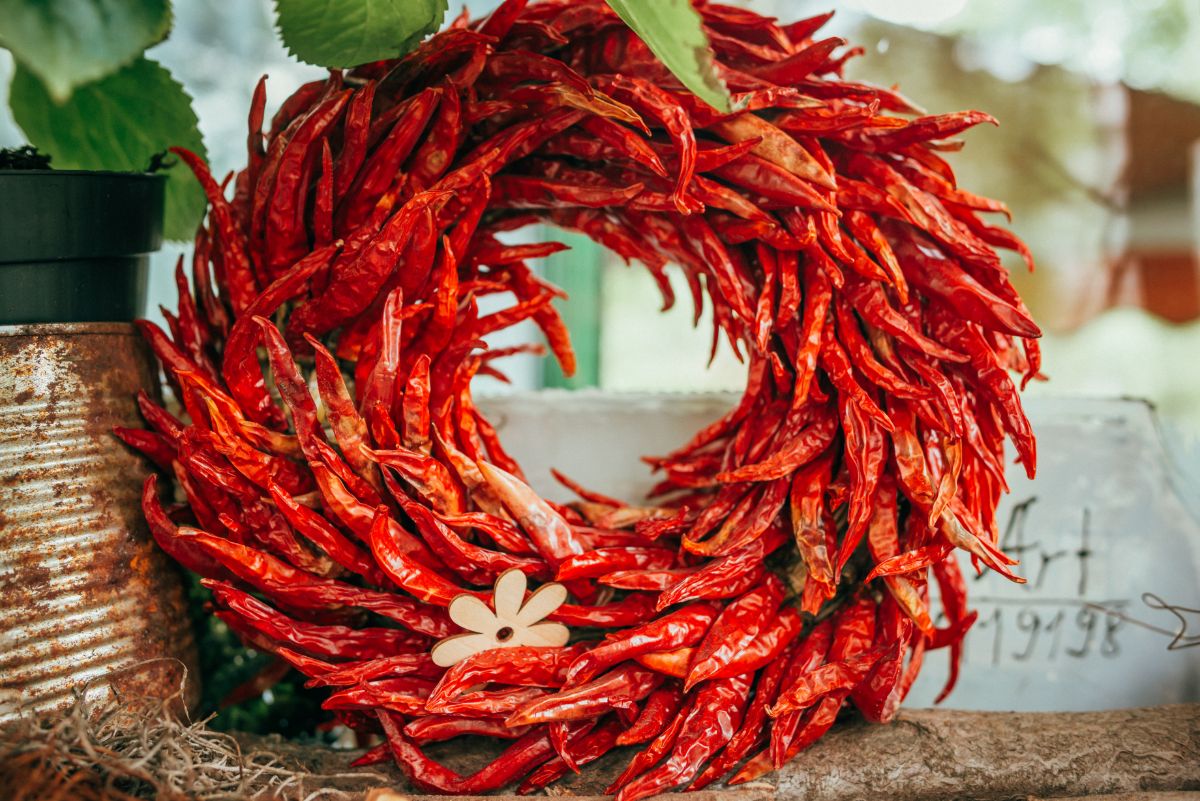
If you like more unique looks, there are other plants to try in your homemade wreaths too. These plants may not be obvious choices at first, but they provide lots of interest and flair to any wreath design.
- Chili peppers
- Pumpkin on a stick
- Succulents
- Citrus
- Mini gourds
Other plants for tons of texture

While adding color to wreaths is essential, you don’t need to stop there. You can also get creative and play with fun textures and shapes with your wreath design.
Some of the best plants you can grow in your backyard for added texture in your wreath making craft include:
- Moss
- Harry Lauder’s walking stick
- Pussy willow
- White birch
- Curly willow
- Pinecones
- Sweetgum
- Cotton
Frequently asked questions
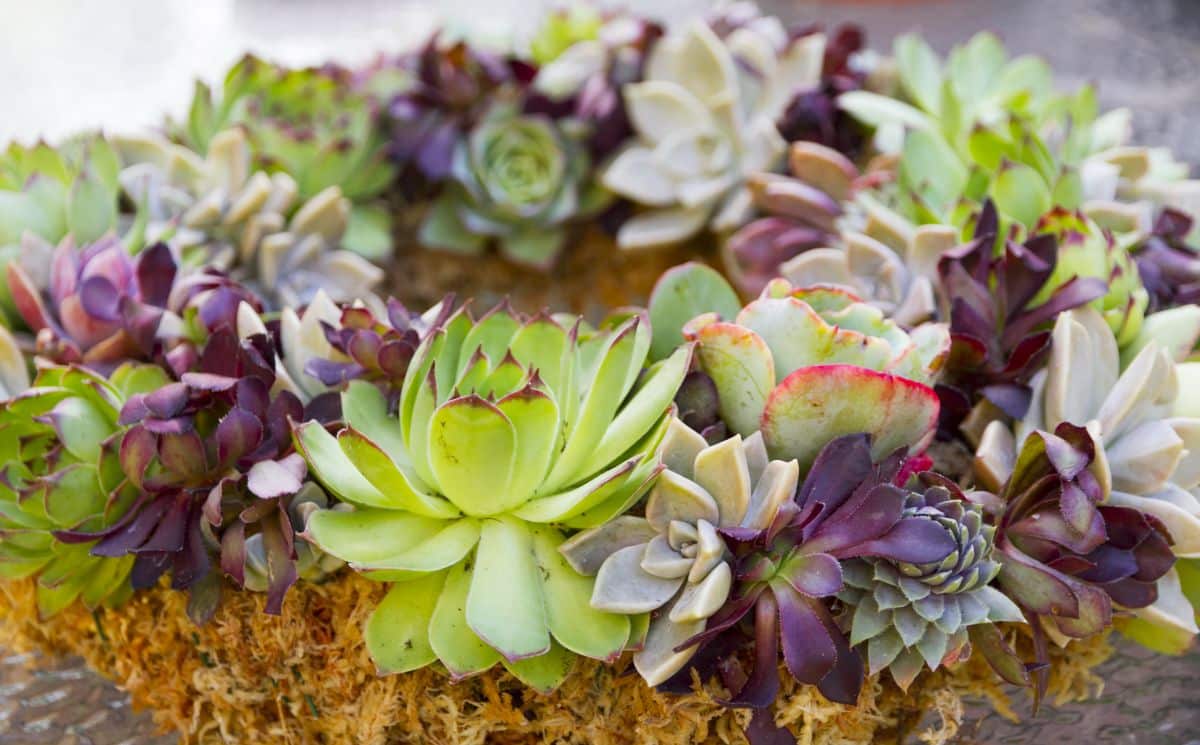
There are a wide variety of plants that are perfect for at-home wreath design, and you can grow your own wreath frames, bases, and accents right in your garden. Plants like grapevine or wheat make wonderful, sturdy homemade wreath frames, while evergreens, like fir and spruce, are hard to beat when it comes to crafting wreaths around the holidays.
Evergreens are the best greens for creating bases for your wreath, thanks to their fine textures and long-lasting colors. Some of the most popular evergreens to grow for homemade wreath crafting include holly, fir, juniper, cedar, magnolias, and white pine.
Yes, compared to store-bought wreaths, homemade wreaths are generally much cheaper to make. Even better, they can be fully customized to suit your taste and your home’s aesthetic.
It can be! If you’ve been inspired to start making your own homemade wreaths and want to grow your business, wreath making can certainly make money, particularly around the holidays. As with any small business, it helps to start small and scale your business as needed rather than invest in a lot of supplies at the outset.
Styrofoam and PVC bases used to be popular wreath frames; however, they are not sustainable and have been falling out of style of late. Instead, natural wreath frames, like those crafted from grapevines, ornamental grasses, or cereal grains, are very aesthetically pleasing, easy on your budget, and sturdy enough to form a beautiful, homemade wreath.
Depending on the weather and the greenery used, many live holiday wreaths can last for up to 8 weeks outdoors. Because indoor air is generally drier during the winter months, live wreaths won’t last as long inside.
Summary
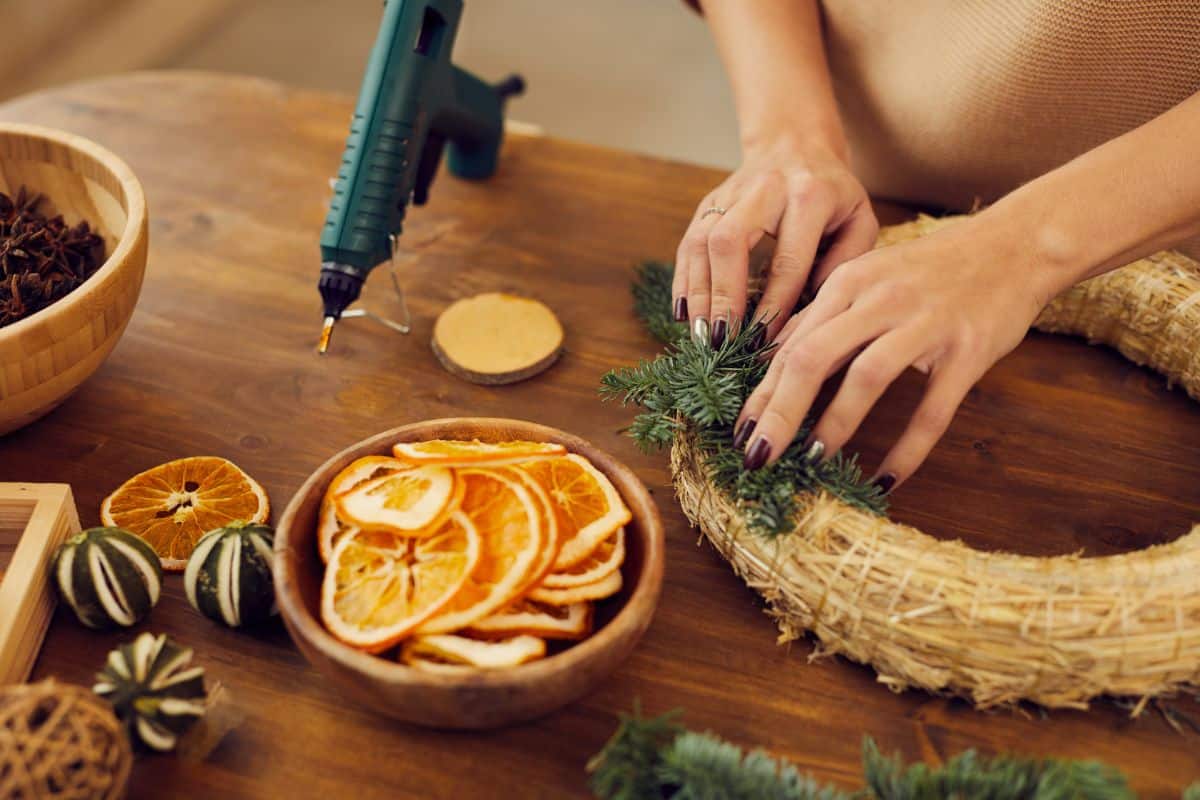
Wreathmaking is most popular around the holidays, but there’s no reason you can’t make beautiful homemade wreaths all year round. This is especially true if you grow your own plants for crafting your wreaths, as you’ll always have materials on hand, and your supplies will be so much less expensive than store-bought crafting elements.
From wreath bases to accents, you can grow pretty much every item you need for a homemade wreath design right in your own backyard. The only limit is your imagination. So why not plant a few flowers for wreath accents, grow your own grapevine or add a new evergreen tree to your landscape? You’ll be very glad you did next time you want to make a new wreath for your front door!
We hope you liked this article! If you’re into DIY and crafting, we recommend that you take a look at our other how-to guides, like our article on herb drying or our piece on creating an indoor fairy garden.

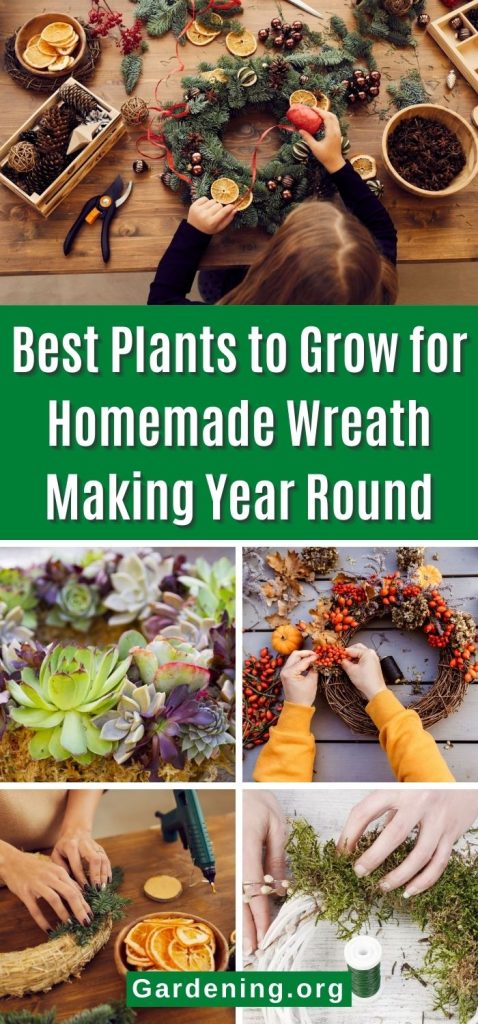
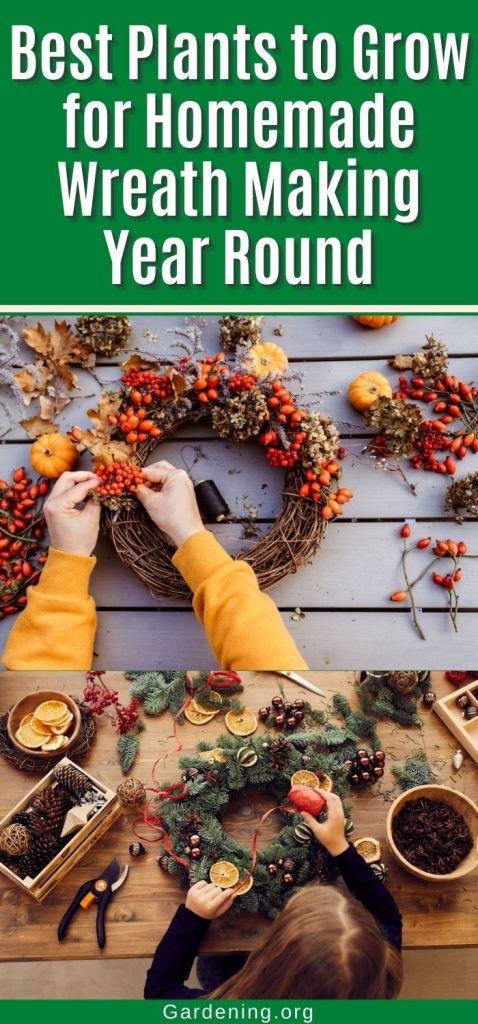
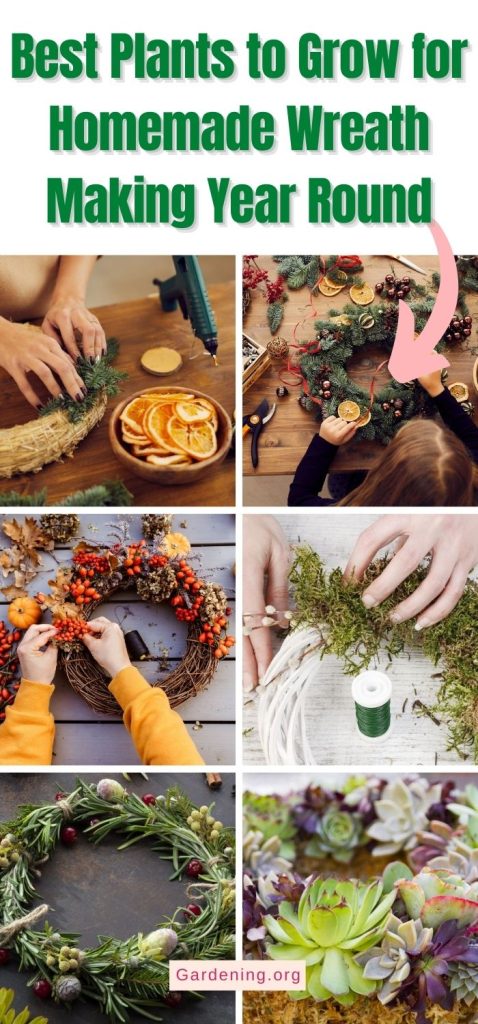
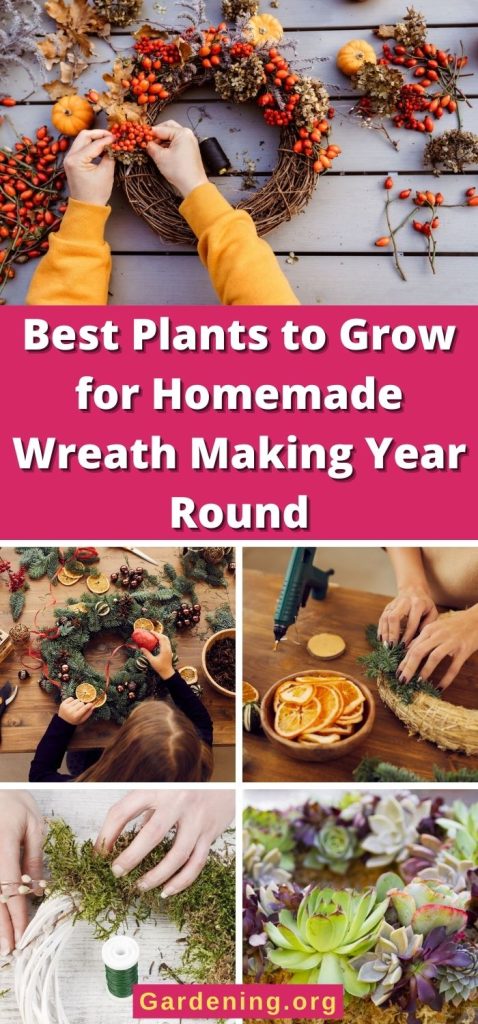

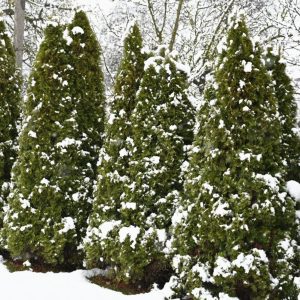


Leave a Reply